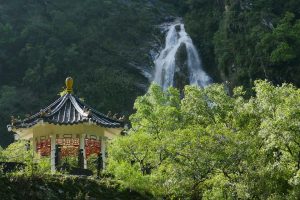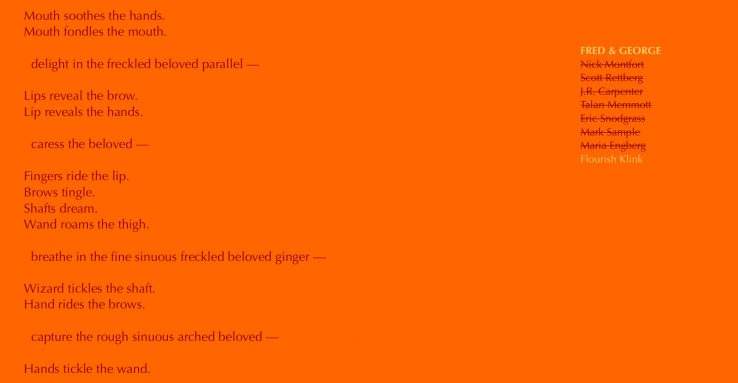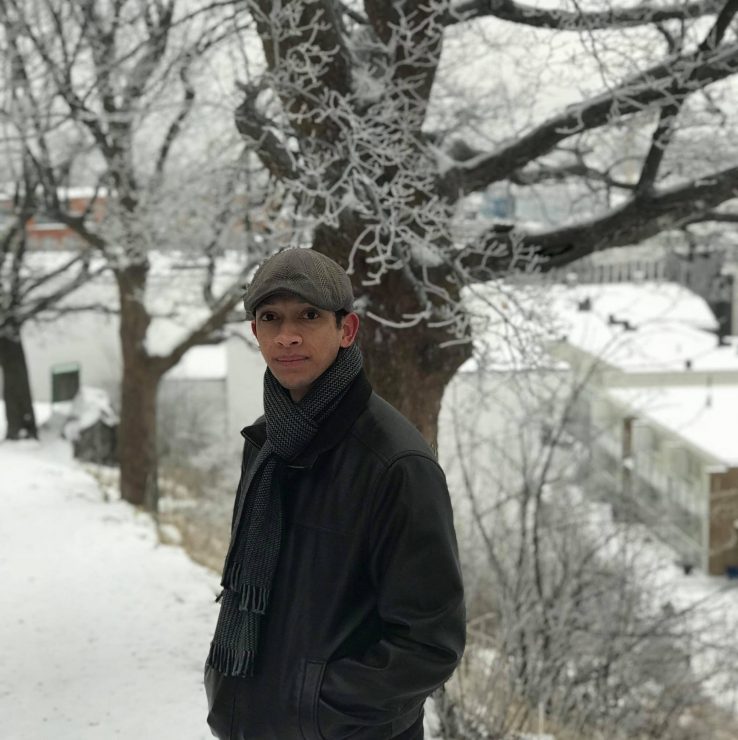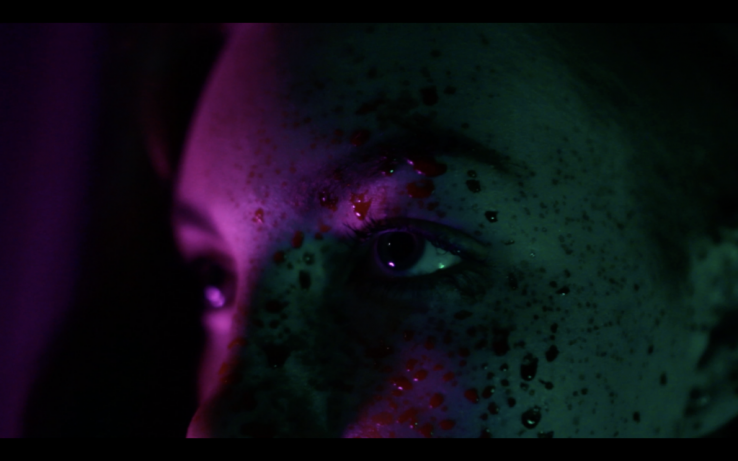This week we were assigned to examine 2-3 versions of Taroko Gorge originally created by Nick Monfort. This piece of electronic literature has been modified by many authors and is a continuous, ever changing work. The original author, Nick Monfort developed this piece using the programming language Python which is now available in JavaScript. This programming language creates a dynamic, digital space of interactivity. It was interesting to experience several different versions and to see how the authors remixed the work. Upon inspecting the source codes, I discovered that each author used Monfort’s original code, but input their own set of words into a word bank that are programmed to randomize while viewing the page. This creates a new version of the poem each time you open a new browser so you never experience the same version twice. One of the contributing authors, Scott Rettberg, described Monfort’s original poem as a “classic and elegant nature poem” that he chose to remix entirely. Rettberg titled his remix, Tokyo Garage which I think suits it well. He describes his version as modern and urban which is a complete contrast from Monfort’s. One of the other versions that I found quite entertaining was the version written by Talan Memmott titled Toy Garbage. The phrases that were generated were quite amusing. Their use of words like Easy-Bake Oven, Furby, and Cabbage Patch Kid instantly took me back to my ever so glamorous childhood of the early Nineties. As a reader, the combinatory nature of the writing created this exciting experience. It was interesting to read each newly generated phrase as it appeared on the screen and try to sort out or piece together the meaning and author’s intent.








